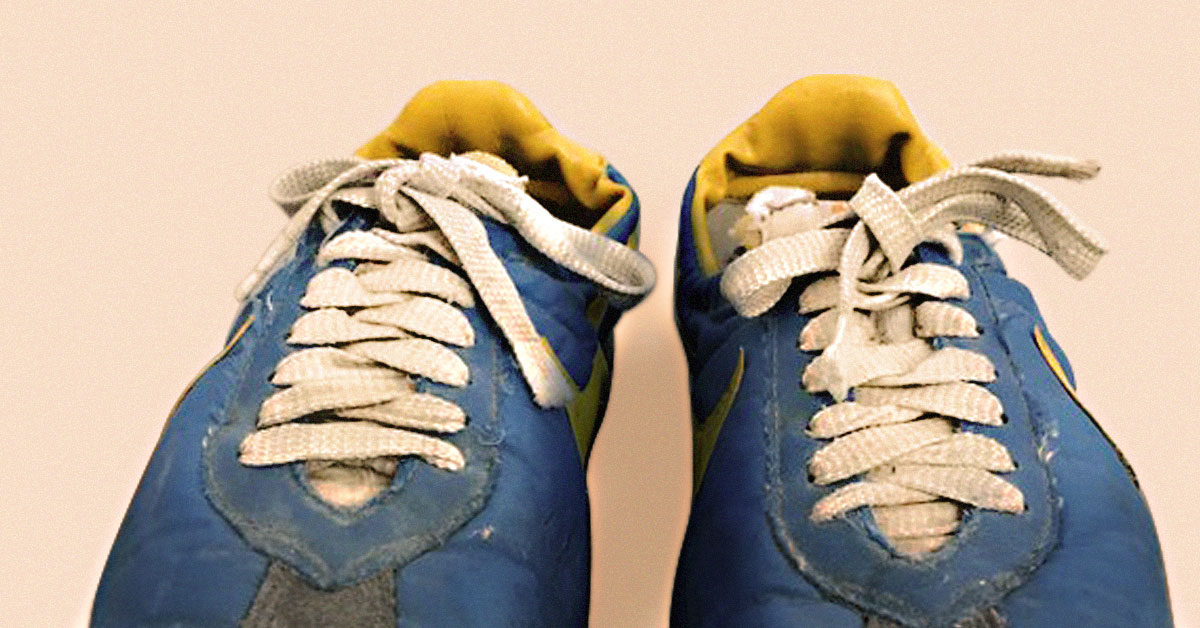
The Smarter Shoes of The Future: Nike in 10 Years
The Past
The classic swoosh logo. The slogan “just do it.” Everyone knows Nike is a leader in the athletic shoes and apparel industry. As a $30 billion company, innovation and Nike go hand-in-foot since the Waffle Trainer. Management there knows that technological advances can assist athletic performance improvements, no matter how simple or complex. They also know that if the innovation provides value to the individual, they’ll continue to be one of the top three market leaders.
Meanwhile, GPS technology has made significant strides in the past decade. We all remember the days where we would use our Garmin GPS to get from place to place. While the GPS’ of the past would get you from Point A to Point B, there were some serious limitations. You would be given the same route regardless of whether you were driving at 9 PM at night or during rush hour. These devices did not have access to the internet so if there happened to be a major accident or recent road closures on your route, you would have no idea of these roadblocks going in and you were not presented with alternative routes. If we go back even further, how about the days of printing out directions on MapQuest to get to your destination? If you happened to miss an exit, becoming lost was a likely outcome. Lastly, for the true OGs, how about the days of busting out a printed map to get directions or stopping by the local gas station to ask for help? Those were the days.
The Present
GPS has come a long way since MapQuest. Can you name one person who doesn’t use Google Maps or Apple Maps on their smartphone? Not only do we receive directions using these apps, but we also have almost real-time updates that alert us of unexpected traffic, crashes, construction, and other road hazards that can have an impact on our expected time of arrival. If things get dicey, these apps provide us with alternative routes (if there are any) so we can get to our final destination as quickly as possible.
The global sports footwear market, Nike’s bread and butter, is expected to hit $87 million by 2020. An attractive market to say the least. What if you could combine GPS technology and shoes into a neat, little package? They’ve flirted with the idea in the past but we haven’t quite gotten there yet. In 2010, Nike and Apple joined forces and introduced Nike+ with GPS tracking. This new product offering used both your shoe and your iPhone or iPod. While this device was a nice start, it didn’t really change consumer behavior. Your phone can provide you with GPS on its own so the sensor in your shoe didn’t provide you with any real benefits beyond some stats. In fact, an argument can be made that this product offering made things less convenient.
The next year, Nike introduced Nike + SportWatch GPS. Think of this device as the previous one we discussed, only your phone has been replaced by a smartwatch. While an improvement, this product didn’t change consumer behavior either because you were still using two devices.
These days, Nike offers Nike + Run Club. The app features training programs, audio guided runs, and weekly and monthly challenges to keep you motivated and at your best. However, this app uses your phone and focuses on the coaching aspect rather than the GPS aspect. It motivates you to give it your all when you’re exercising and keep you entertained but you can achieve the same goal by listening to a podcast on your phone.
Our attachment to the physical trappings of technology is waning. The advent of Bluetooth headphones, Apple watches, and wireless charging pads free up the user from worrying as much about their phones. We are well aware of how much screen time is dominating our lives, hitting a maximum capacity on a daily basis. We’re at what technology writer Farhad Manjoo has dubbed “Peak Screen.” There is even a study that the simple presence of a phone can reduce our cognitive capacity. Also notice how the Microsoft Kinect operated with gestures (RIP), how Apple iPhone Xs don’t require an unlock code anymore, or how voice-led Amazon Echo or Google Home are evolving our computer interactions. These all show attempts to liberate the user from physically using their devices. With as much as our attention is currently in demand, these inconspicuous layers will help humanity not just be more human, but quite possibly a better human.
The Future
Over the next couple of years, it seems like the pieces will be in place. It’s a world with the technology but increasingly without the screens. We know Nike sees the value of a smart shoe. Think of the implications in various respects. How nice would it be if you could map out your route prior to your run? This would allow you to constantly explore new running trails. How great would it be if your shoes connected to your Bluetooth AirPods? No need to worry about preventing your phone from getting wet when it’s raining. And what if your shoe would alert you of changes in conditions through auditory directions? Things like rain and other weather conditions, park closings, and more. How nice would it be if you had access to a vast amount of information during and after your run such as your time, heart rate, calories burned, rest intervals, etc.? Mounds of data at your disposal to analyze your runs, track your progress, and make improvements. All without having to look at a screen.
Your smart shoe could also provide reassurance to your friends and family. If you like to run alone, and you like to run outdoors, you often run in isolated areas. Crowd GPS tracking, à la TrackR or Tile, have demonstrated the usefulness of a low-power tracking functionality. Having GPS tracking in your smart shoe would allow others to know where you are at a moment’s notice. And of course, your shoe would serve as the sole device needed for all of these benefits. No need for a phone or smartwatch.
The technology is there. At their headquarters in Oregon, there exist Nike Innovation Labs. Nike has developed what looks like a circuit board that is placed in the sole of your shoe. This is an advancement compared to sensors that are attached to your shoe. This innovation is built in. Other companies across the world have also made progress in this area. This is all made possible now that the technology has gotten smaller and cheaper. It’s the convergence of price and technology, which expands accessibility. The result? Something that’s used exclusively by wealthy individuals or professional athletes, in this case, can now be used by everyday people. We’ve seen the same thing happen with computers, TVs, and more.
I, for one, would be one of the first people in line to buy such a smart shoe. For someone who has a terrible sense of direction, GPS has changed my life. I no longer get lost all the time like I used to back in the day. It took me three years to memorize how to get to my local grocery store without directions when I was in college. As someone who enjoys hiking, I would love to have the ability to plan routes, have access to meaningful data, and use my GPS while exercising. That way, I don’t run the risk of getting lost in the wild and sleeping with wolves.

